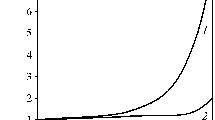Summary
The development of material laws for concrete subjected to highly dynamic loadings is a topic of current research. Explosive charges or high-velocity impacts produce high pressures in the kilobar region within microseconds. Hydrocode simulations by coupling of Lagrangian with Eulerian grids have been carried out, considering the interaction between explosive loading and the structure. Concrete is a composite material with a variety of inhomogenities. By homogenization of the microstructure, a macroscopic approach in the framework of continuum mechanics has been adopted. Appropriate constitutive laws that enable the nonlinear rate-dependent as well as the local damage behaviour to be modelled had to be introduced. A new damage law that describes void compaction as well as the classical theory of plasticity had been taken into account. An equation of state had to be provided to ensure the compliance with conservation laws on which hydrocodes are based. To obtain the necessary material data, experimental investigations were indispensable. Therefore, a series of field tests with specimens which were concrete slabs exposed to explosive contact charges has been conducted.
Similar content being viewed by others
Author information
Authors and Affiliations
Additional information
Received 19 March 1999; accepted for publication 9 December 1999
Rights and permissions
About this article
Cite this article
Gebbeken, N., Ruppert, M. A new material model for concrete in high-dynamic hydrocode simulations. Archive of Applied Mechanics 70, 463–478 (2000). https://doi.org/10.1007/s004190000079
Issue Date:
DOI: https://doi.org/10.1007/s004190000079




